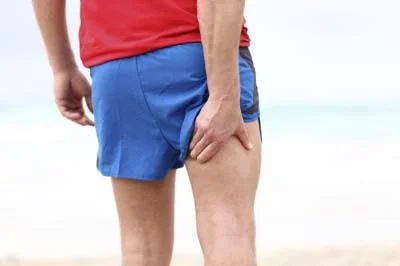How Muscle Tissue Healing Works
We've all been in the situation where we've strained a muscle where it's put us out of action for periods of time. This blog looks at what goes on internally with how exactly the body heals damaged muscle tissue.
A muscle strain occurs through damage to the muscle fibres, which make up the length of the muscle, overstretch and tear causing pain at rest or on movement, swelling, bruising and inflammation resulting in the inability to use that muscle. This can occur anywhere on the muscle whether it’s at the muscle tendons (the thicker part at the ends of the muscle where it attaches to bone) or to the muscle belly (the central 'meaty' part of the muscle). For more on muscle strains click here.
So what exactly goes on during the recovery processes? Lets get sciencey and discuss the 4 phases of tissue healing, which are:
- Bleeding
- Inflammation
- Proliferation
- Remodelling
Bleeding Phase
This occurs immediately after sustaining the injury and is really brief, however the bleeding does depend on which structures have been damaged. Vascular tissue, such as muscle, will bleed for longer than other tissues such as ligaments in relation to volume and duration. The vascular tissue bleeding will usually last between 4-6 hours unless complications arise from affected structures surrounding the tear.
Inflammation
Following the bleeding comes the inflammation to the site that is the redness, swelling and heat we see when someone goes down from this type of injury, which is vital to the tissue repair process. Inflammation to the area can also be exacerbated by other contributing factors such as overuse injuries, joint dysfunction or nerve entrapment. The inflammatory phase has a fast onset of a few hours (just as the tissue bleeding phase finishes) and continues up to 3 days as it gradually reduces after a couple of weeks.
Profliferation Phase
This phase is where tissue regeneration begins, involving the body’s natural repair material, which is collagen for muscle strains also known as scar tissue. This phase occurs between 24 and 48 hours of the injury and concludes roughly after 3 weeks. Between the start and the end of the proliferation phase is where the high majority of scar tissue is produced and the final product of scarring continues until a matter of months from the injury.
Remodelling Phase
Lastly the remodelling phase begins at the peak of the proliferation phase (when majority of collagen fibres/scar tissue is formed) around weeks 2-3 but can also start earlier. It’s really important to get treatment at this stage, as the scar tissue is eventually able to perform as perfectly working, quality muscle tissue. Once the recovery stages is complete, the damaged tissue in severe strains is left with a neat and perfectly functional scar capable of being put under load or stretched as normal muscle tissue would.
If you have sustained a muscle strain, it’s best to get it assessed my one of the physiotherapists. This will determine the severity of the strain through muscle testing, treatment to assist in speeding up the recovery time to promote the proliferation phase and especially the remodelling phase; and to be educated through what you can and cannot do through the stages of muscle recovery.
Source:
Electrotherapy on the web
http://www.electrotherapy.org/modality/soft-tissue-repair-and-healing-reviewBrukner, P., & Khan, K. (2006). Clinical Sports Medicine. McGraw Hill.



